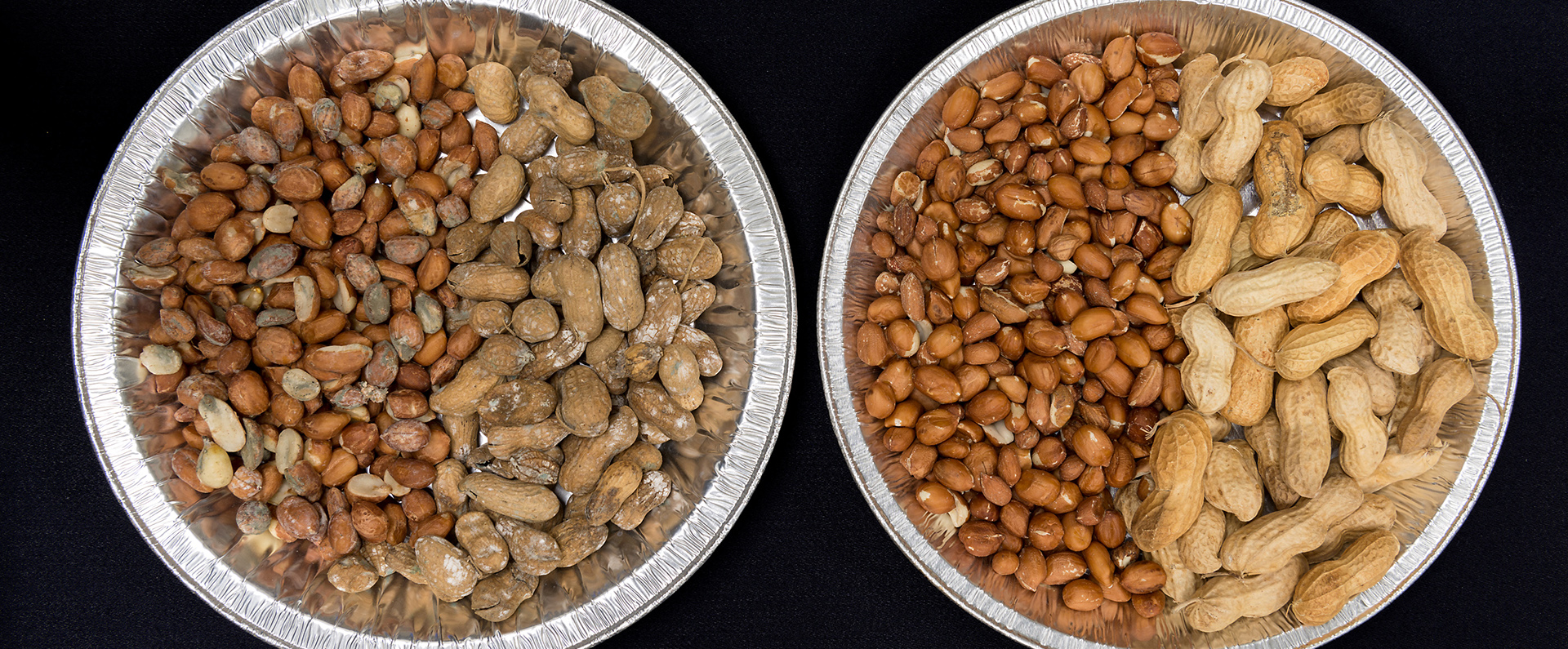Saving Energy, Stopping Molds in Stored Peanuts
Americans eat more than 6 pounds of peanut products per person each year, making the legume a prized cash crop with a farm value of more than $1 billion. Consumers may not realize how much hard work—and science—goes into every bite.
After harvest and processing, for example, loads of shelled peanuts are placed in cold storage at 38 degrees Fahrenheit (° F). However, ARS researchers in Dawson, GA, determined that 38° F isn’t the best temperature to use—contrary to long-standing industry practice and a recent trend towards shelling peanuts 12 months a year.
Based on a year-long study they conducted, the researchers observed that at 38° F, the relative humidity levels in the top portion of shelled peanuts in bulk-storage containers increased enough to cause mold growth. In commercial situations, such mold growth can prompt buyers to reject an entire lot (20-metric ton shipment) of bagged peanuts upon arrival—at a significant cost to the sheller.
The researchers found that raising the temperature to 55° F with relative humidity levels of 65 percent solved the mold problem without affecting peanut quality. Another benefit: energy savings of up to 50 percent.
Based on these findings, the U.S. peanut industry is revising its best management practices for keeping shelled peanuts in cold-storage facilities. Two commercial shelling companies have begun making the temperature switch in their cold-storage facilities.



